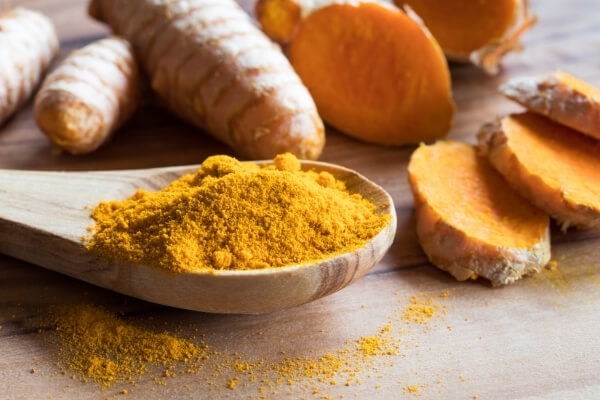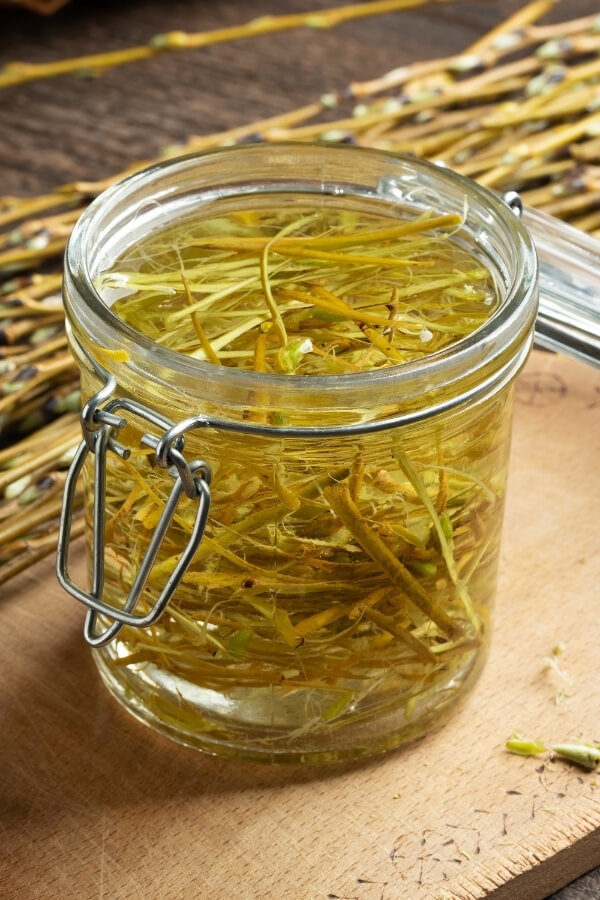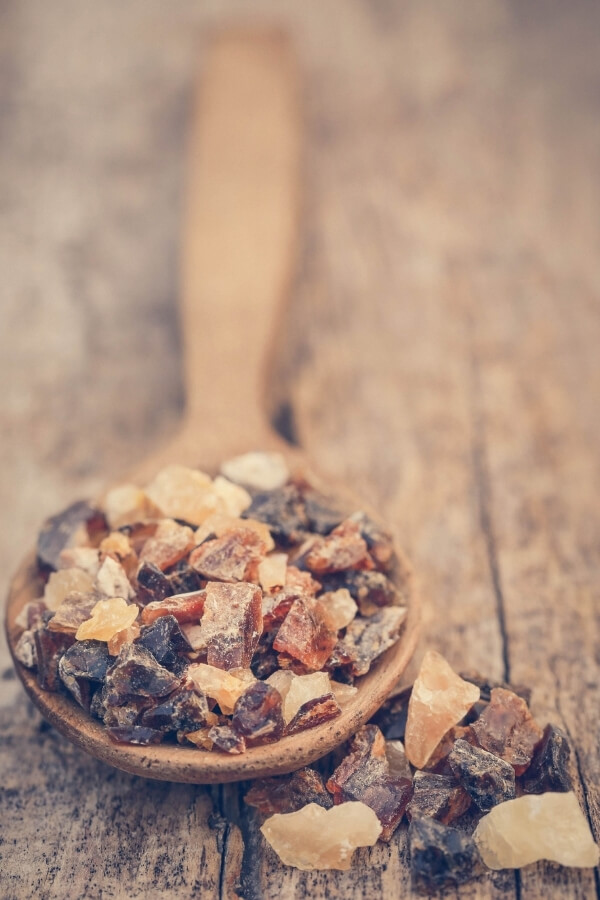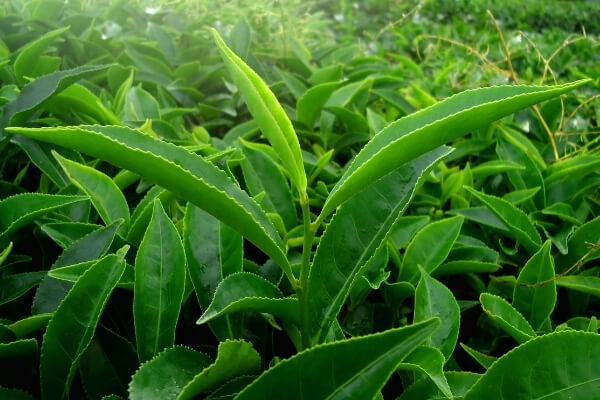5 Plants for Reducing Inflammation
9th Feb 2021
Anti-inflammatory is a popular buzzword. But what does inflammation mean exactly, and why is it the latest boogeyman on the health scene? Let's dive into what it is, why it occurs and what to do about it.
Inflammation is your body's way of protecting itself from harm. Despite the negative press, it’s an essential part of your natural healing response. If you cut your finger - the inflammatory process is triggered. White blood cells arrive and send chemicals to do things like kill germs. That's just one example, and it pertains to acute inflammation. Meaning, inflammation that comes, does its job and goes back home on time. In this case, it’s truly friend, not foe.
However, when inflammation overstays its welcome, it can be bad for your health. It becomes known as chronic inflammation and is at the root of serious health conditions like heart disease, cancer, kidney disease and more.
Chronic inflammation can be the result of an auto-immune disease or may be triggered by lifestyle factors. That includes things like your diet or stress levels. For example, toxins from cigarettes or an excess of fat cells are considered to contribute to chronic inflammation. The good news is that your lifestyle can also be designed to reduce inflammation, no matter its source!
A great way to nurture an anti-inflammatory lifestyle is through your diet, which would include eating lots of plants. But some are more effective than others. Let's look at some well known plants for reducing inflammation and how to use them.
Cannabis Sativa (Hemp)
As producers of small-batch, organic CBD products we’ve got to start with the plant that’s stolen our hearts. Our CBD comes from hemp that we carefully grow on our farm. Knowing that CBD is one of the compounds getting attention from the scientific community for its anti-inflammatory benefits makes us even more excited about our work.

Studies suggest CBD may lead to an anti-inflammatory effect in the body. We say “may” because the research is incomplete, but promising. The full picture is yet to be established, as inflammation is a complex issue. For example, understanding inflammation in the context of arthritis is a separate endeavor from exploring inflammation in the case of irritable bowel syndrome. As you might expect, figuring out the role of CBD in each case is a distinct process and it's not as simple as a blanket statement of CBD’s powers.
That said, many animal studies have been done. Some have identified leads for understanding how CBD interacts with inflammation, and have created excitement for further research. Human studies are now needed to have more certainty of its effects.
Worth noting is that compared to conventional medication, some of which may have negative side effects, experts say that CBD is known to generally be safe in that regard. Therefore, some people believe that using CBD is a good option, even before the scientific seal of approval is certain. They feel it poses little risk and has potentially strong benefits, making it worth it to see how it works.
There’s plenty of anecdotal evidence by users of CBD who say it helped them with inflammation. But that’s not everyone’s experience. Many factors can be at the heart of people's differing reactions to CBD. For example, it might be the dose, type of CBD taken, the period of time over which CBD is consumed, other medications, or a person's unique constitution. If you’re curious whether CBD will work for you, we recommend trying it for yourself and observing the results.
Turmeric

Being one of the most studied botanicals, turmeric is the poster child for an anti-inflammatory food. A bright orange root, it's most typically consumed in dry, powdered form, but can also be eaten fresh. For thousands of years it’s been used as both a culinary spice and a medicinal herb.
One of its many bioactive compounds is curcumin, which is well regarded for its anti-inflammatory and antioxidant qualities. Studies hypothesize that turmeric is able to inhibit certain molecules engaged in the inflammation process, like some types of cytokines.
A topic of hot discussion is its bioavailability. According to some studies, combining turmeric with another ingredient can drastically improve its absorption by the body. Examples of popular suggestions include black pepper.
You can use turmeric on food all across the sweet-to-savory spectrum. Traditionally, it’s been added to recipes like curry or drank by mixing it with milk. The latter, called haldi doodh in India, has been adopted into an Instagram-favorite, now known as Golden Milk in the USA. It’s basically the same concept, but usually features a plant-based milk and any other spices or other add-ons people choose.
We recommend adding turmeric to smoothies or any rice-based dishes, where it can stain your rice to a gorgeous shade of ochre. If you're less excited about eating it with food, you can take it in pill form too.
White Willow Bark
White willow bark belongs to the family of willow trees and shrubs, which grow across most of the planet. This variety got its name for the white-ish color on the underside of its leaves. It has been regarded for its health benefits in traditional medicine for thousands of years. It also has a telling nick-name: nature's aspirin.

That's because the Latin name for white willow bark is salix alba. When its extract was isolated it was aptly named salicin. Aspirin, as we know it today is actually a chemical derivative of salicin! This salicin in the willow bark reduces inflammation, much like aspirin. However, it’s believed that it may be gentler on the stomach, and therefore preferred by some people.
It can be taken in capsule form or as a tincture, which would allow more accurate dosing. But some people believe that the plants best effects can only shine when no extraction happens - and the other flavonoids and plant particles are kept intact. So they chew on the bark. Managing one's dose this way can become tricky.
Keep in mind, natural doesn't always mean safe. Take arsenic for example. And often the distinguishing factor is the dose. When it comes to white willow bark, it's not considered to have side effects when taken in moderation, but taking too much can upset your stomach.
Boswellia (Indian Frankincense)

Meet Boswellia, aka olibanum, aka Indian frankincense. A lot of names for one powerful plant. Boswellia is a resin which comes from the Boswellia serrata tree, which grows in India, the Middle East and Northern Africa. Lesser known in the United States, but it’s worth getting to know. It’s been used in the local cultures and medicines of where it's grown for centuries and has been traditionally prized for its anti-inflammatory properties.
And you don't even have to cut down any trees to get it. Boswellia is extracted by "tapping" (but not like a sugar maple, more like scraping) the bark to make it release resin. The resin is then collected and used to make various products.
In Ayurveda, boswellia resin is considered one of the most valued plant materials. In ancient Ayurvedic texts it's noted that tree resins have a healing effect on arthritic symptoms, which we know are connected to inflammation. Likewise, boswellia has been used in folk medicine for generations in cases where chronic inflammation was at play.
Modern research seems to confirm the traditional know-how. Studies show that boswellic acid may inhibit inflammatory enzymes and prevent the formation of leukotrienes - molecules that can cause inflammation. But, while promising, science has not yet finished investigating boswellia. Studies are done on cells and animals, but human studies are still lacking.
Green Tea

The culture of drinking green tea originated in China thousands of years ago. The tea comes from the Camellia sinensis leaf. Fun fact - that’s the exact same leaf from which black tea is made also. The difference? Green tea leaves don't go through the same fermentation process, where the plant material undergoes oxidation.
Green tea may contain more antioxidants, which is important, as oxidative stress can lead to inflammation. Its anti-inflammatory powers may be due to an abundance of a polyphenol called EGCG. This component has shown the potential to suppress inflammatory cytokines and inflammation-related enzymes.
So how much to drink? It would seem that one thing to consider is your caffeine tolerance. Green tea has less caffeine than black tea (by up to three times) and significantly less than coffee. However, if you’re sensitive to caffeine, consider alternatives or have your last cup by mid-afternoon.
Another thing to consider is your iron levels. If you are deficient and especially if your iron sources are plant based, it may be worth timing your green tea consumption to be at different times than your iron consumption, as large amounts of green tea may impede iron absorption. Good to know!
Somebody, get us a turmeric, matcha CBD latte - STAT!
The bottom line is that inflammation is an important physical response meant to serve you. But you don't want it to be there when it's not needed. And you don't want it to stay for long periods of time.
In some cases there are diseases that are accompanied by inflammation and we're looking for a way to lower it. In other cases we want to balance lifestyle habits that may lead to inflammation.
Whatever the case, plants are our friends. Many of them have traditionally been celebrated for their anti-inflammatory powers, and some of them are now being scientifically researched. CBD and other cannabinoids are some of the most promising plant-derived compounds, and the sheer volume of studies and interest in it is a clear indicator of their potential. That said, why have just CBD when you can have all these amazing plants for reducing inflammation?
For that, try our CBD Latte recipes - one option combines CBD with green tea, in the form of matcha, and the other blends it with turmeric. Cheers to your good health!
